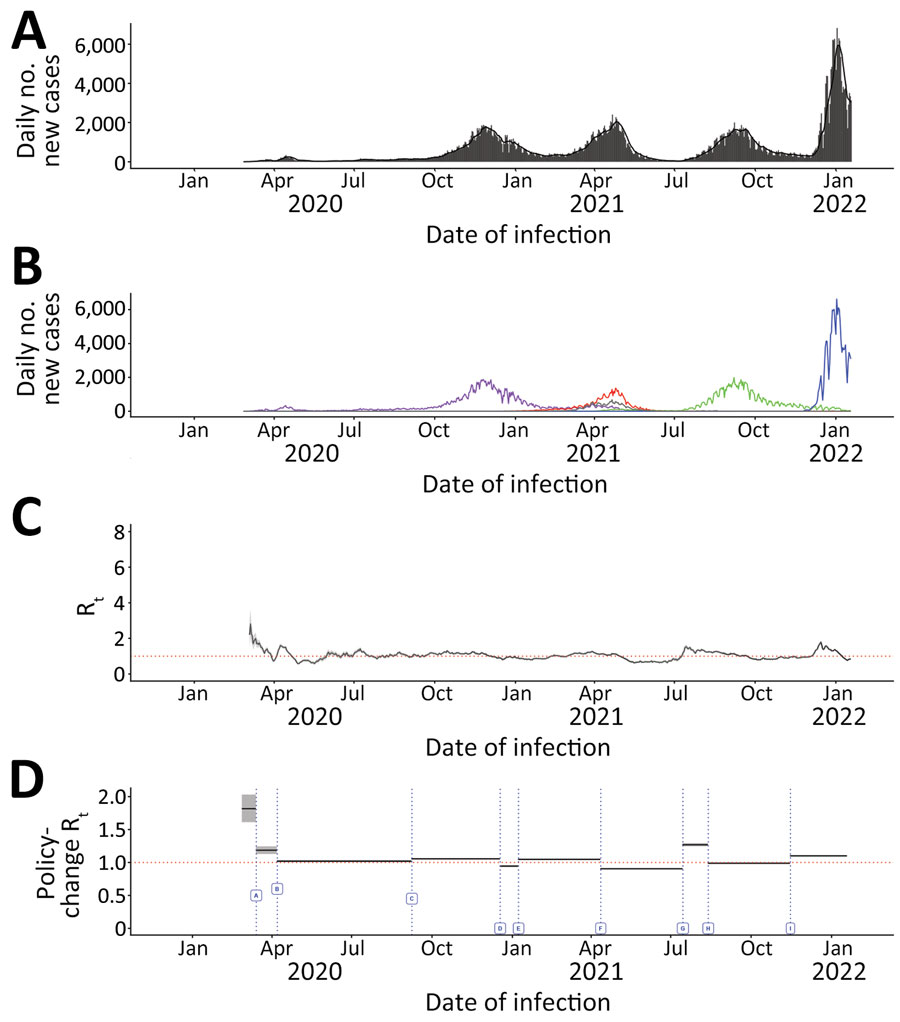Volume 30, Number 5—May 2024
Research
SARS-CoV-2 Transmission in Alberta, British Columbia, and Ontario, Canada, January 2020–January 2022
Figure 3

Figure 3. Daily incident COVID-19 case count and 7-day moving average Rt, by date of infection and policy-change Rt or new variants by initiation dates, Alberta, Canada, January 23, 2020–January 27, 2022. Dates are assumed infection dates (i.e., report date minus 9 days); red dotted lines in panels C and D indicate Rt = 1. A, B) Incident case count by date of infection for all variants combined (A) and by variant type (B). Colors indicate COVID-19 variants: purple, wild-type; red, Alpha; green, Delta; blue, Omicron; and gray, other variants. C) Seven-day moving average Rt by date of infection. D) Policy-change Rt. Policy changes or detection of new variants by dates of initiation: A, school closure (March 14, 2020); B, recommendation for use of face masks (April 7, 2020); C, phased school reopening (September 8, 2020); D, priority populations vaccination rollout (December 18, 2020); E, partial school reopening (January 8, 2021); F, school closure (April 12, 2021); G, increase in cases because of Delta COVID-19 variant (July 15, 2021); H, requirement of vaccination for federal workers (August 13, 2021); I, increase in cases because of the Omicron COVID-19 variant (November 15, 2021).
1These first authors contributed equally to this article.
2These second authors contributed equally to this article.